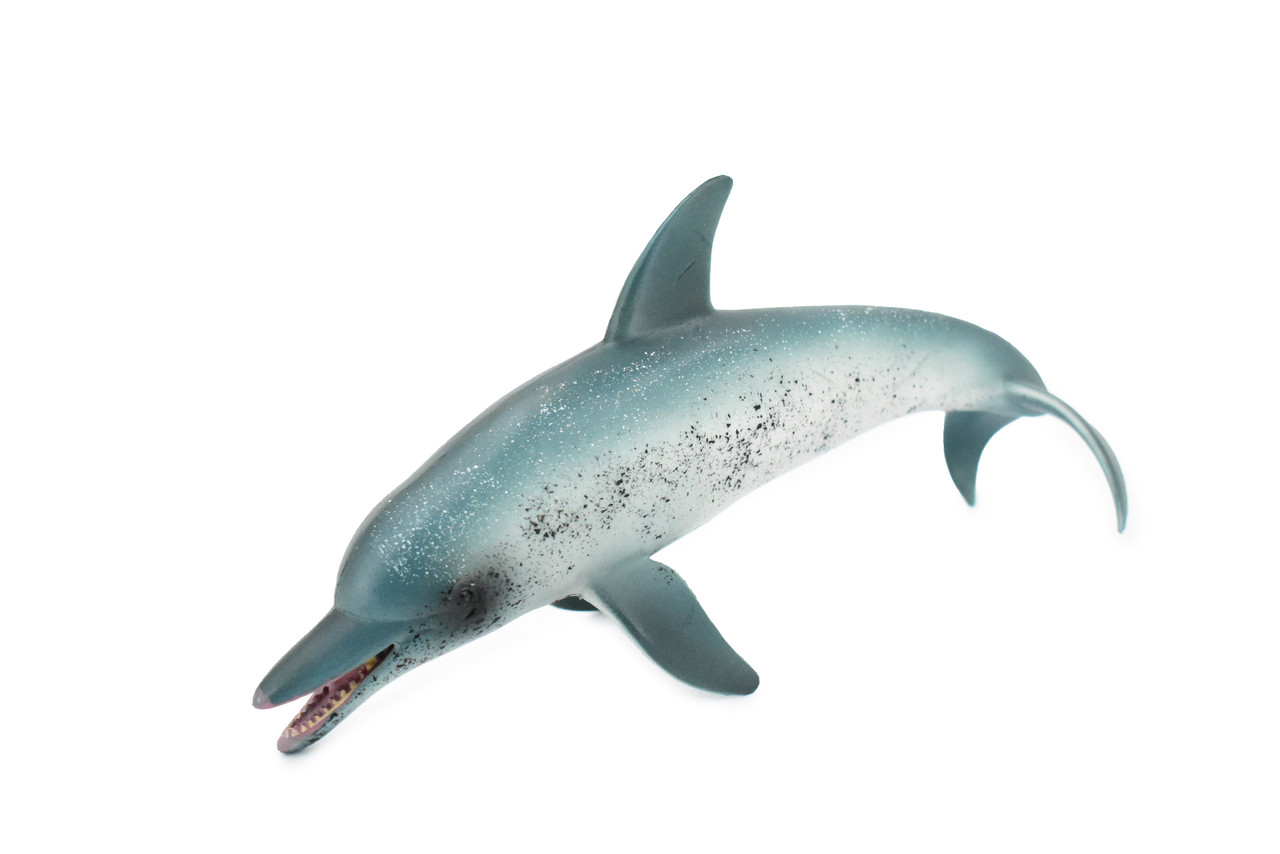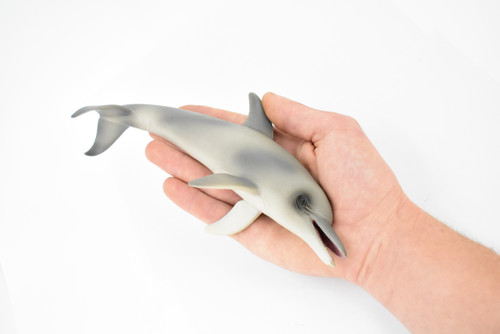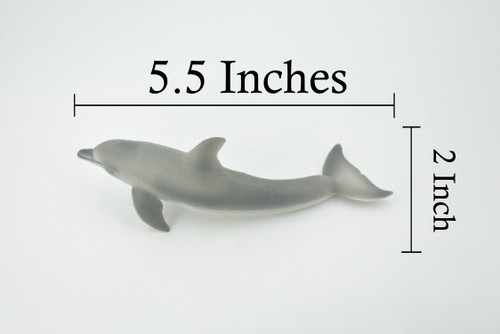Product Description
The coloring of the Atlantic spotted dolphin varies enormously as it grows, and is usually classified into age-dependent phases known as two-tone, speckled, mottled, and fused. Calves are a fairly uniform gray-white, with one or no spots. When they are weaned, speckling occurs, typically between 3 and 4 years and lasting for an average of 5 years. A juvenile is considered mottled when it develops merging gray and white spots on the dorsal surface and black spots on the ventral surface. This usually happens between age 8 or 9. A fused pattern is reached when dark and white spots are on both the ventral and dorsal sides. As the animal matures, the spots become denser and spread until the body appears black with white spots at full maturation.
In comparison to other dolphin species, the Atlantic spotted dolphin is medium-sized. Newborn calves are about 35–43 in (89–109 cm) long, while adults can reach a length of 2.26 m (7 ft 5 in) and a weight of 140 kg (310 lb) in males, and 2.29 m (7 ft 6 in) and 130 kg (290 lb) in females. Compared to the much smaller pantropical spotted dolphin, the Atlantic spotted dolphin is more robust. It shares its habitat with the pantropical spotted dolphin and the bottlenose dolphin.
The Atlantic spotted dolphin was first described by Cuvier in 1828. Considerable variation in the physical form of individuals occurs in the species, and specialists have long been uncertain as to the correct taxonomic classification. Currently, just one species is recognised, but a large, particularly spotty variant commonly found near Florida quite possibly may be classified as a formal subspecies or indeed a species in its own right.
Atlantic spotted dolphins in the Bahamas have been observed mating with bottlenose dolphins. Rich LeDuc has published data that suggest the Atlantic spotted dolphin may be more closely related to the bottlenose dolphins (genus Tursiops) than to other members of the genus Stenella. More recent studies in the 2020's indicate that this is a consequence of reticulate evolution (such as past hybridization between Stenella (spotted dolphins) and ancestral Tursiops (bottlenose dolphins)) and incomplete lineage sorting, and thus support T. truncatus and T. aduncus belonging to the same genus. This likely explains why Atlantic spotted dolphins can mate with both species of bottlenose dolphins.
Collectible Wildlife Gifts is the market leader in providing high quality, realistic toys of all types! Every one of our items is heavily inspected for quality craftsmanship and authenticity. Our products make great gifts for your family and friends! Additionally, our lifelike animal figurines and plush make for great displays and educational sets. We are happy to serve our wide range of clientele from parents to educators, gift shop owners and many more!
Our team works hard to ensure you get a great toy. All products from CWG are checked for quality to ensure you receive the order in perfect condition.
From plush sharks to educational animal growths cycle we offer the perfect toy or gift for any occasion. Our products have been ordered by educational groups, aquariums, zoos, and more.
Great customer service is guaranteed when you order from Collectible Wildlife Gifts, we want you to love your toy and have a simple ordering process, we are happy to assist with inquiries!

























